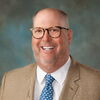Tech cos. big winners at Juice
It's a little ironic that at Camden's recent Juice Conference 3.0: Celebrating Risk, perhaps the most compelling element of the conference — the two-day, 65-company pitch contest — eliminated competitors whose ideas were, well, too risky. Turns out when a chunk of venture capital is at stake, pitch judges tend to moderate their consumption of risk juice.
The public was barred from the final round nitty-gritty, but all of the grand-prize competitors later reported to Mainebiz that the judges primarily grilled them on their sales and marketing plans. In the end, Newfield Design Inc. took home the top prize, a $100,000 convertible note (which can be turned into a loan, company equity or some mix of the two), for its patent-pending software that expands two-way radio communication.
The company's edge? Perhaps it was CEO Jim Colony's plan to market to the 50,000 municipalities, taxi companies and other organizations that need to comply with a new federal regulation. According to Colony, the new law means municipalities must either foot the hefty bill to redo their radio infrastructure or buy his firm's ERCS, which is a $5,000 box about the size of a police scanner. Colony's sales strategy was also tested; he already has a Virginia county signed on. And it couldn't have hurt that two of the six final-round judges — Don Gooding (who also contributed $25,000 of his own money to the award) and John Burns of the Small Enterprise Growth Fund — had already begun due diligence with Newfield unrelated to Juice. Risk juice tastes sweeter with all the cards on the table.
Here's more on Newfield Design and other pitch winners to keep an eye on:
Colony compares the company's ERCS software to the Babel fish universal translator made famous in Douglass Adams' novel, "The Hitchhiker's Guide to the Galaxy." Currently, agencies subscribed to two-way radio can only communicate agency-to-agency through a second party at an emergency dispatch. The dangerous inefficiency of this system surfaced on 9/11, when fire crews responding to the crumbling South Tower did not know that police had already been told to evacuate. The ERCS software, created by West Newfield-based inventor Bob Stone, translates different municipal emergency crews' babble into one universal language. The software can also be marketed to industrial truckers, oil refineries, taxi cabs and other public and private radio users that need interoperability, Colony says.
Evergreen Home Performance President and CEO Richard Riegel sees his company as more than a weatherization outfit, it's a guru of energy-efficient health. His technicians consider home energy-efficiency strategies holistically, much, he says, like a hospital provides health care. This means Evergreen's treatment often goes beyond initial symptoms to an overall treatment plan that can include everything from installing insulation to shoring up moist basements to repairing tiny cracks in a wall. Only by addressing all aspects of energy inefficiency, says Riegel, can Evergreen "make the house feel as beautiful as it looks." At Juice, Evergreen won $25,000 in flexible debt (a loan that the company can use all or some of) from Coastal Enterprises Inc., which will help Riegel pursue his $100,000 financing goal and expand the company to tap what he says is a $10 billion energy-efficiency market in the state.
Cerahelix is CEO Susan MacKay's second company to benefit from the brains at the University of Maine at Orono, whose scientists helped MacKay develop a natural odor-reducing trash bag and the technology for her latest product, the Helix Nanofiltration Membrane. Yes, that's helix as in DNA. Cerahelix applies a DNA coating over porous ceramic filters, then bakes the coated filters in an oven until the organic pieces of DNA burn off. The imprint left by the baked-off DNA creates nanoscopic holes in the filter that MacKay says make water three times cleaner than the competition. MacKay claims the water is also filtered faster using less energy because it races along nanochannels left behind by the long DNA strands. MacKay believes the market is ripe for water filtration technology and she's in heavy pitch-mode in Boston these days — the National Science Foundation has committed to matching 50 cents on every dollar over $100,000 that Cerahelix raises.










Comments